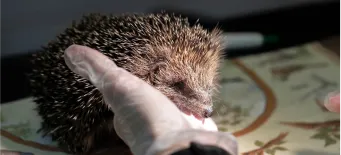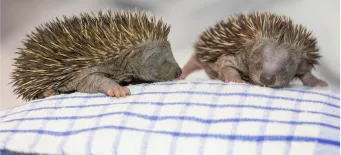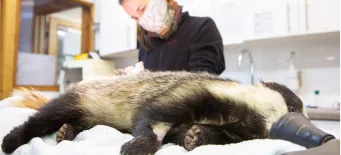Unless there are herons out there secretly forming marshland militias armed with foam blasters (and if so, we’ve seriously underestimated bird intelligence), we can only assume this particular grey heron made a heartbreaking mistake: mistaking a Nerf bullet for a fish. And honestly, that just genuinely breaks our hearts.
When this heron was brought into our care, it was clear he’d been having a hard time. He was underweight and frail, with a noticeable lack of the muscle needed for flight—his wings drooping just slightly, his posture tired. These birds are usually powerful fliers and agile waders, but this one looked exhausted, worn down by hunger and the constant struggle to find food in an increasingly polluted environment. So, when a brightly coloured piece of foam floated by, who could blame him for thinking he’d found an easy meal?
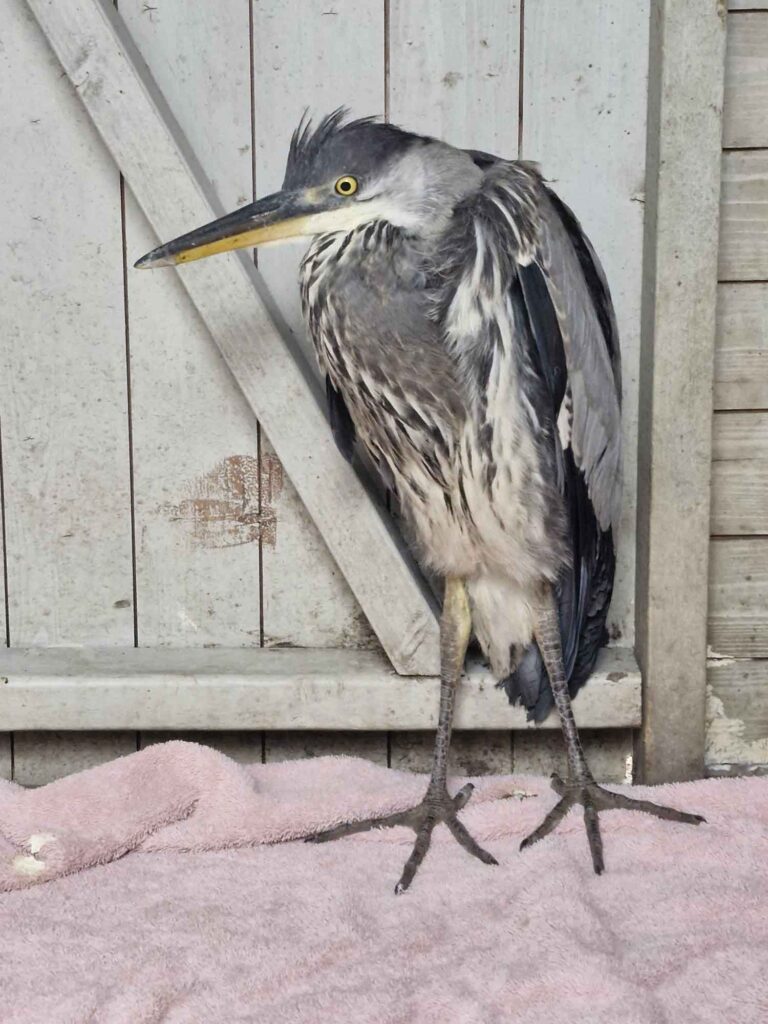
Desperation does that. When you’re hungry enough, survival instincts override caution—and that innocent-looking Nerf dart, bobbing on the water, must have seemed like the perfect catch. Sadly, it wasn’t the only thing he had tried to digest. The very next day, our team discovered both the Nerf bullet and a piece of plastic in his enclosure, which he had regurgitated overnight. It was shocking, but not surprising. As more plastic and non-biodegradable litter ends up in natural habitats, more wildlife are paying the price for our carelessness.
From that point on, he became the focus of close attention and gentle care. We carefully monitored his appetite, tracked his weight, and yes—examined every passing moment (and every passed item) to make sure his system was clearing out the damage. Our care team are nothing if not thorough—and while glamorous it certainly is not, it’s the kind of work that quietly makes all the difference.
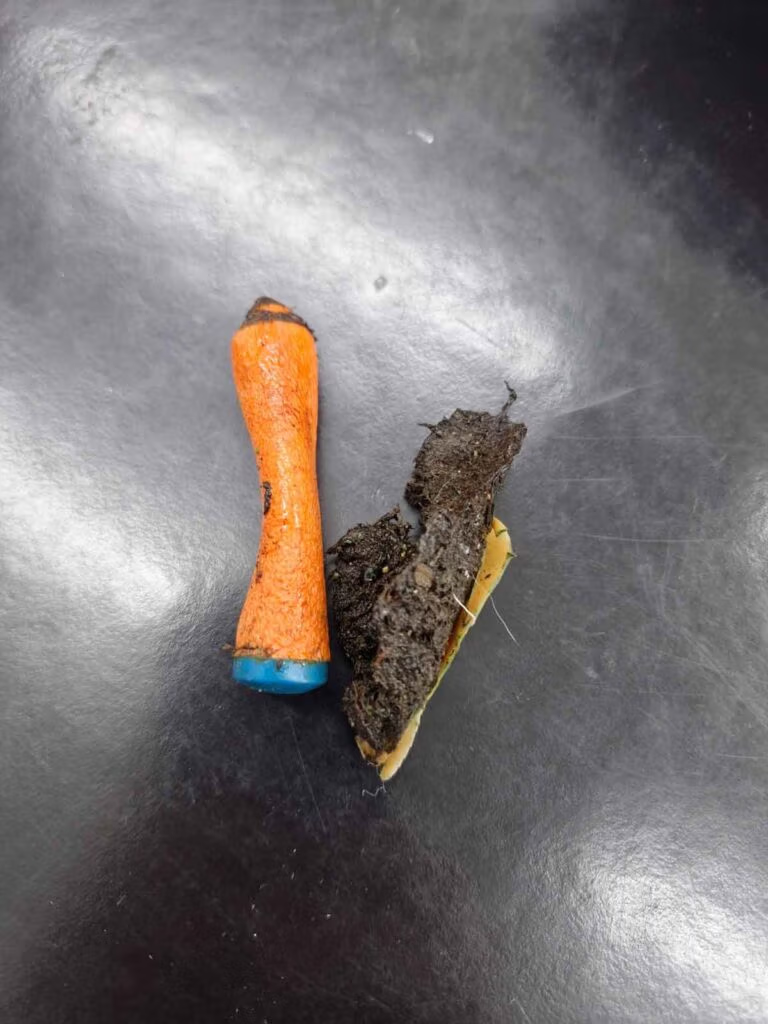
The heron responded better than we’d dared to hope. With a nutritious, fish-rich diet and plenty of rest, he began to regain his strength. Day by day, he stood taller. His eyes grew brighter. After just over two weeks in care, he had gained a wonderful 500 grams—a huge leap for a bird his size. And then came the moment we’d all been waiting for: it was time to go home.
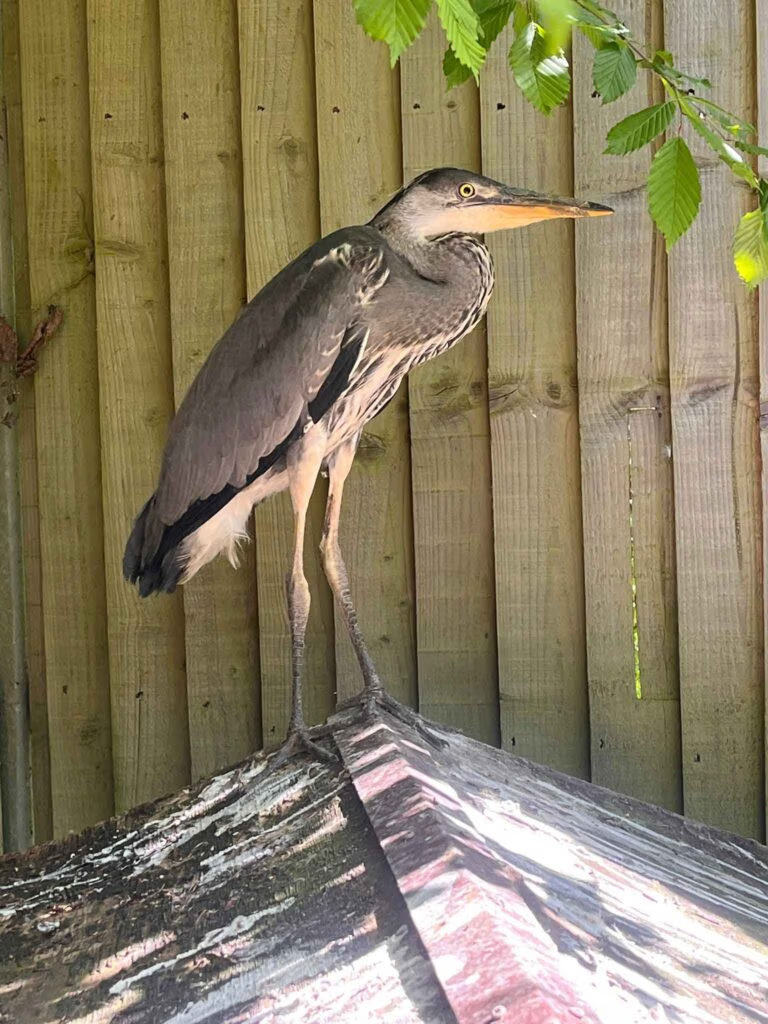
During his initial rescue, a possible mate was spotted nearby at the pond just across the road. So naturally, when the time came, we returned him to that very spot. He didn’t hesitate. He stretched out his wings, took to the air with grace, and glided straight toward the reeds—right back to the water’s edge. He landed with ease and settled in, right where he belonged.
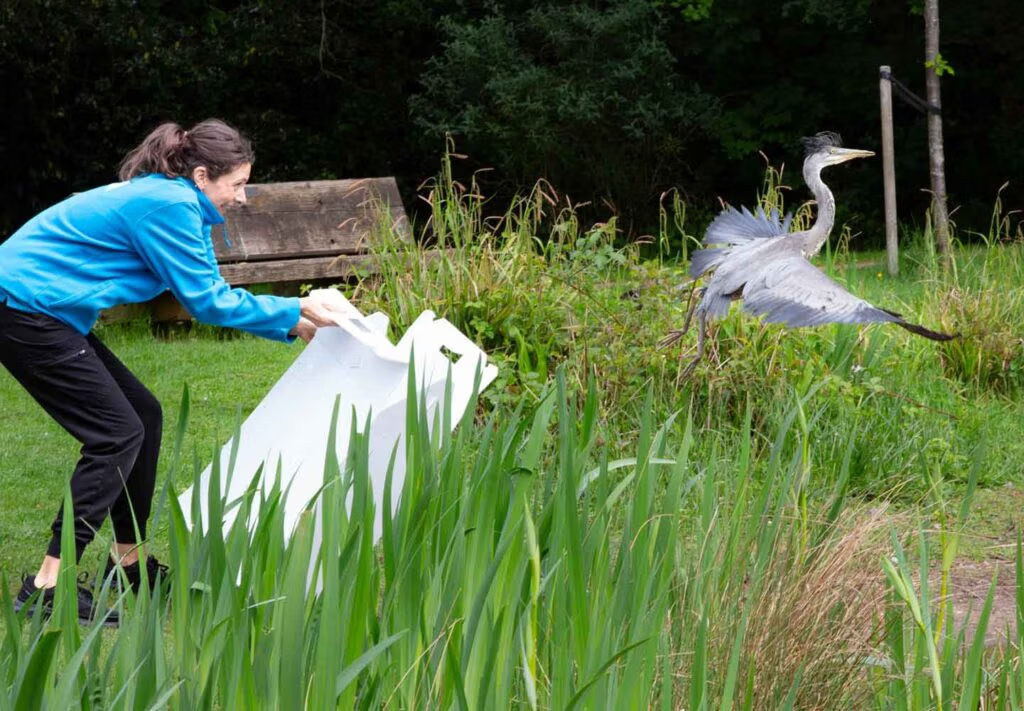
As early nesters, grey herons begin breeding in the late winter and peak around March. While we can’t be certain, we’re hopeful we’ve returned him just in time to reunite with a mate and maybe even take part in raising a new brood this season. The timing feels serendipitous.

When you donate you help towards the costs of looking after all the animals here at the hospital.
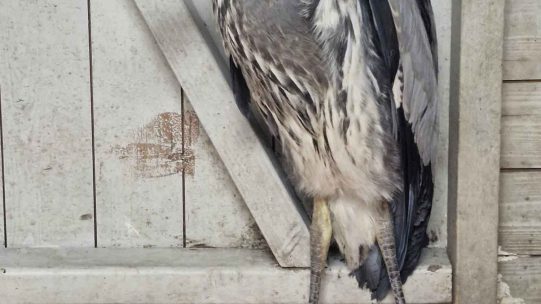
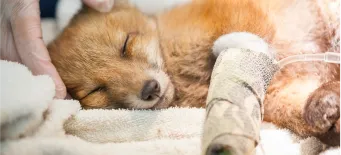
Could provide medicine for a sick animal
